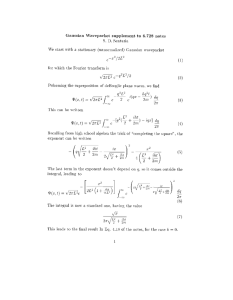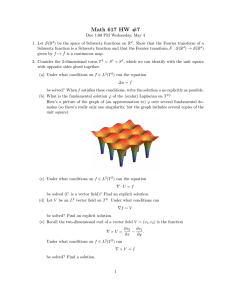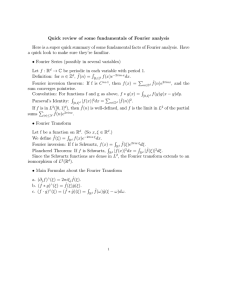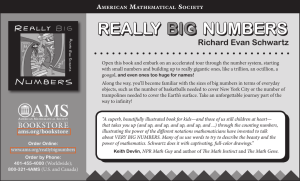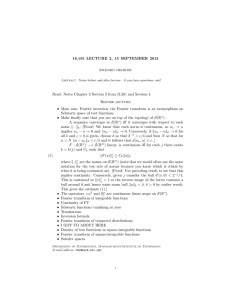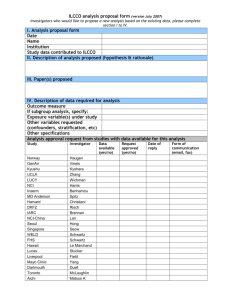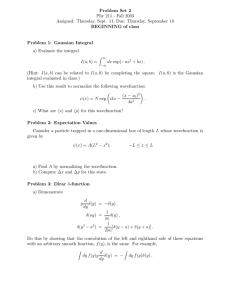Optional Open-Ended Project 1.
advertisement
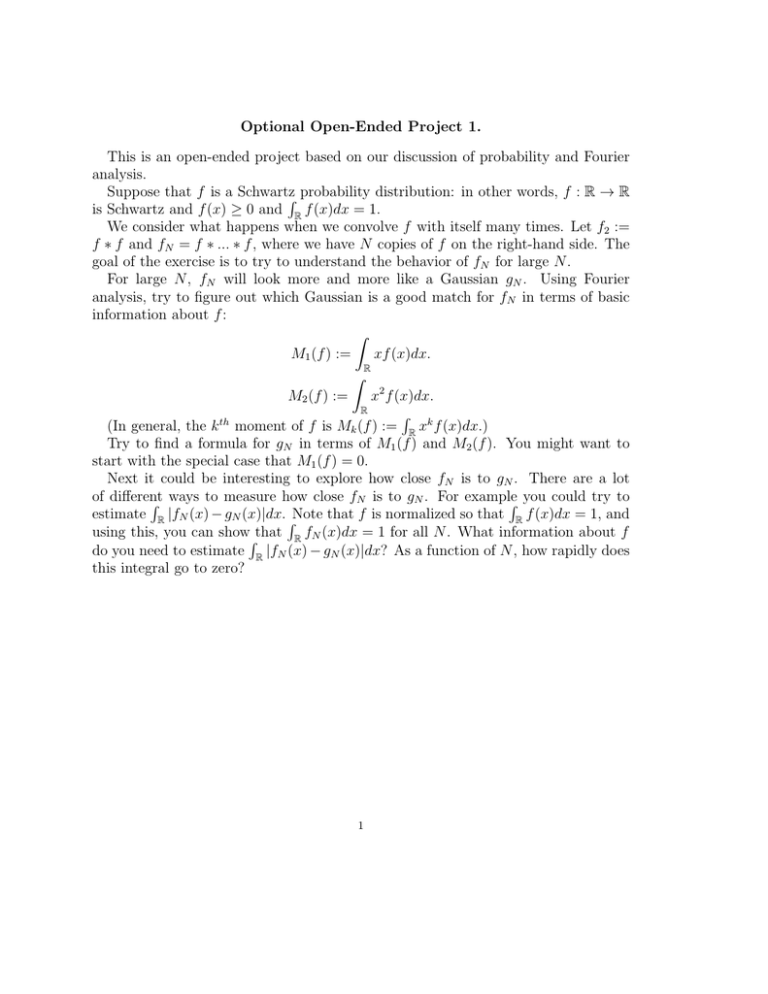
Optional Open-Ended Project 1. This is an open-ended project based on our discussion of probability and Fourier analysis. Suppose that f is a Schwartz R probability distribution: in other words, f : R → R is Schwartz and f (x) ≥ 0 and R f (x)dx = 1. We consider what happens when we convolve f with itself many times. Let f2 := f ∗ f and fN = f ∗ ... ∗ f , where we have N copies of f on the right-hand side. The goal of the exercise is to try to understand the behavior of fN for large N . For large N , fN will look more and more like a Gaussian gN . Using Fourier analysis, try to figure out which Gaussian is a good match for fN in terms of basic information about f : Z xf (x)dx. M1 (f ) := R Z x2 f (x)dx. M2 (f ) := R R (In general, the k th moment of f is Mk (f ) := R xk f (x)dx.) Try to find a formula for gN in terms of M1 (f ) and M2 (f ). You might want to start with the special case that M1 (f ) = 0. Next it could be interesting to explore how close fN is to gN . There are a lot of different R ways to measure how close fN is to gN . For example R you could try to estimate R |fN (x) − gN (x)|dx. RNote that f is normalized so that R f (x)dx = 1, and using this, you can showRthat R fN (x)dx = 1 for all N . What information about f do you need to estimate R |fN (x) − gN (x)|dx? As a function of N , how rapidly does this integral go to zero? 1
